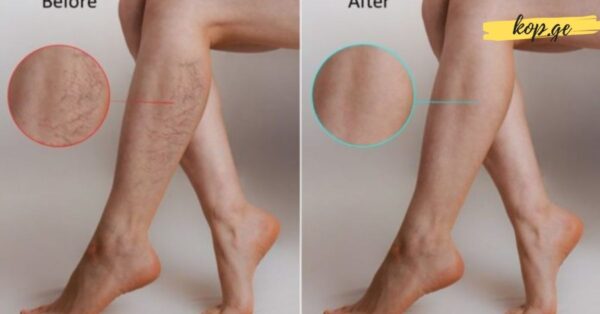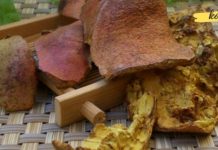Alternative Treatments for Varicose Veins: Affordable and Effective Natural Methods

Varicose veins are one of the most common circulatory problems affecting millions of people around the world, especially women. While they may seem like a cosmetic issue at first glance, varicose veins can cause discomfort, swelling, and even pain, particularly in the legs. Fortunately, there are natural, low-cost methods that can help alleviate symptoms and even prevent the condition from worsening.
In this article, we’ll explore the causes of varicose veins, simple prevention tips, and the best alternative and natural treatments you can try at home to improve circulation and support vein health.
What Causes Varicose Veins?
Varicose veins are swollen, twisted veins that typically appear in the legs due to poor blood circulation. They develop when valves in the veins fail to function properly, allowing blood to pool rather than flow back toward the heart. This can lead to bulging, discolored veins that may be painful or itchy.
Some of the most common causes and contributing factors include:
Poor circulation
Genetics (family history)
High cholesterol
Sedentary lifestyle (sitting or standing for long periods)
Obesity
High blood pressure (hypertension)
Hormonal changes, especially in pregnancy or menopause
In some cases, underlying cardiovascular diseases may also contribute to the development of varicose veins. That’s why it’s important to undergo regular check-ups with a cardiologist, especially if you have a family history of vein or heart-related conditions.
Preventing Varicose Veins: Healthy Habits That Help
The best way to deal with varicose veins is to prevent them from forming in the first place — and the key lies in maintaining a healthy lifestyle. Here are some essential components of a vein-friendly routine:
Balanced Nutrition:
A diet rich in fiber, antioxidants, and healthy fats can support vascular health. Include plenty of vegetables, fruits, whole grains, and omega-3-rich foods.
Proper Hydration:
Staying hydrated helps maintain healthy blood flow and prevents the blood from becoming too thick or sluggish.
Regular Physical Activity:
Moderate daily exercise, like walking, swimming, or yoga, improves circulation and strengthens leg muscles, which helps support vein function.
Daily Movement:
Avoid prolonged periods of sitting or standing. Take breaks to walk around or elevate your legs to improve blood return to the heart.
Doctor-Recommended Habits for Vein Health
Beyond lifestyle changes, here are some practical habits that medical professionals recommend for preventing or managing varicose veins:
Try contrast showers: Alternating between hot and cold water helps stimulate circulation. Always end with cold water on the legs to tighten blood vessels.
Elevate your legs regularly: Propping your feet up on a pillow for 15–20 minutes a day can significantly reduce swelling and improve blood flow.
Massage your legs: Gently massaging with essential oils like rosemary, peppermint, or lavender can ease tension and promote circulation.
Avoid tight clothing: Restrictive clothing around the waist, thighs, or legs can reduce blood flow and worsen symptoms.
Use sun protection: UV rays can weaken vein walls over time. If you’re spending time outdoors or at the beach, always apply sunscreen.
Natural Remedies for Varicose Veins
Nature offers a wide range of remedies that can help reduce the symptoms of varicose veins. These natural treatments work best when used consistently and combined with healthy habits.
Here are some of the most effective herbal and home remedies:
1. Garlic
Garlic is a powerful anti-inflammatory that supports circulation and helps break down toxins in the blood vessels. You can include it in your diet or create a garlic-infused oil to apply topically.
2. Aloe Vera
Aloe vera is well known for its soothing properties. When applied directly to the skin, it can improve circulation and reduce inflammation. Warm aloe vera gel slightly and massage into the affected area before bedtime.
3. Bay Leaves & Calendula
These herbs are ideal for creating a natural paste or compress. Boil bay leaves and calendula petals in water, then blend into a thick paste. Apply to varicose veins and leave overnight. Calendula also has skin-rejuvenating properties, making it useful for treating discoloration.
4. Peppermint, Bay Leaf & Eucalyptus
These herbs offer a refreshing, cooling effect that can relieve heaviness and fatigue in the legs. Infuse them into oil or use as part of a homemade lotion to apply directly to the legs. Optionally, add a pinch of baking soda to enhance absorption.
5. Carrot and Aloe Vera Mask
Blend cooked carrots with fresh aloe vera gel to create a natural mask. Apply to legs for 30 minutes and rinse off with cool water. Carrots contain antioxidants and vitamins that support skin and vein health.
6. Sea Salt Soaks
Soaking your legs in warm water mixed with sea salt and apple cider vinegar is incredibly relaxing and promotes blood flow. Do this for 20–30 minutes several times a week. The minerals in sea salt can also reduce swelling and inflammation.
Why Choose Natural Remedies?
One of the greatest advantages of these natural treatments is their low cost and easy accessibility. Unlike pharmaceutical creams or surgical options, herbal remedies are gentle on the body and can be used at home with little risk of side effects.
However, it’s important to note that natural remedies should not be viewed as a complete replacement for medical care. In moderate to severe cases of varicose veins, or if symptoms persist, you should always consult with a healthcare provider. Ideally, use these remedies in conjunction with medical advice, not in place of it.
Final Thoughts
Varicose veins are more than just a cosmetic issue — they’re often a sign that your circulatory system needs attention. Fortunately, by adopting a healthier lifestyle and incorporating natural, affordable treatments into your routine, you can improve circulation, reduce discomfort, and prevent the condition from worsening.
Consistency is key. Whether you’re applying herbal remedies, soaking your feet in a salt bath, or making small changes in your daily routine, every step counts toward healthier, more comfortable legs.
Remember: nature has given us powerful tools — it’s up to us to use them wisely.












